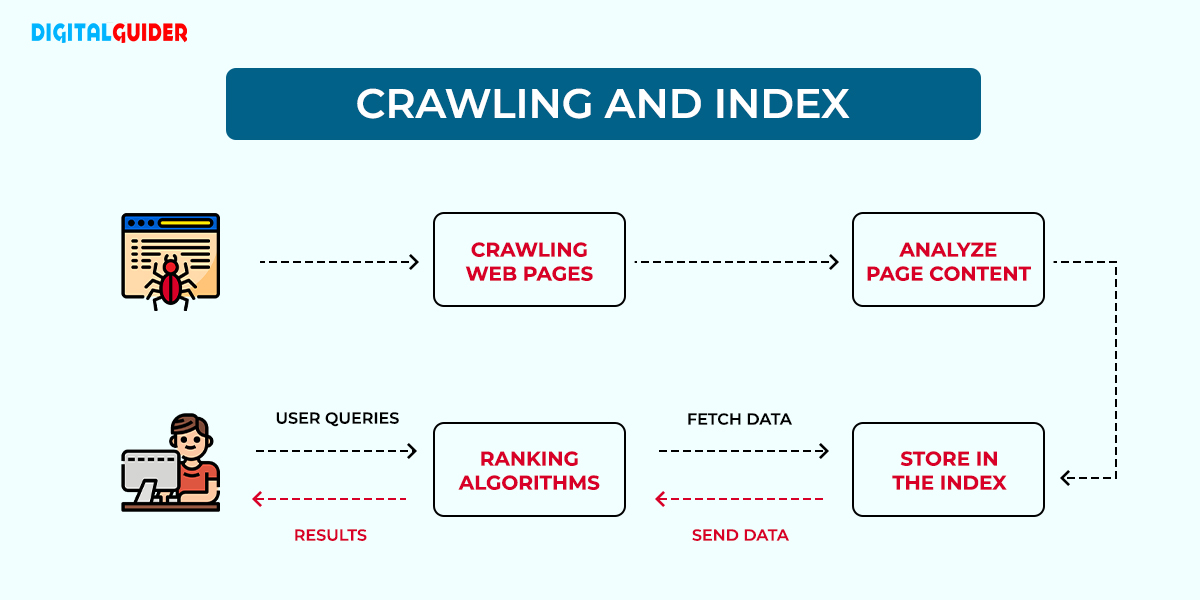Unveiling the mysteries of AMP – the key to unlocking lightning-fast site speeds and maximizing performance. Dive in now!

Image courtesy of via DALL-E 3
Table of Contents
Introduction to SEO and AMP
In today’s digital landscape, understanding the importance of SEO and AMP can make a significant difference in how your website performs. Let’s break down these concepts in a way that an 11-year-old can easily grasp.
What is SEO?
SEO, or Search Engine Optimization, is like a secret code that helps websites show up higher in search results when someone searches for something online. It’s like a treasure map that leads people to the right place on the internet. When websites use good SEO, they are easier to find, like a hidden gem that shines brightly.
What is AMP?
AMP, or Accelerated Mobile Pages, is like a magic potion that makes web pages load super fast, especially on mobile devices like smartphones and tablets. Imagine clicking on a website and it magically appears on your screen in the blink of an eye – that’s the power of AMP!
By combining the powers of SEO and AMP, websites can not only be more easily discovered but also provide a lightning-fast experience for visitors. Let’s dive deeper into how AMP can help web pages load faster and why site speed is crucial for a website’s performance.
Why Site Speed Matters
Site speed plays a crucial role in the success of a website. When a web page loads quickly, it enhances the user experience and keeps visitors engaged. Let’s explore why site speed matters for websites and how it can impact their performance.
User Experience
Imagine clicking on a website and having to wait for what seems like forever for it to load. It can be frustrating, right? Well, that’s why site speed is essential. When a site loads fast, people have a better experience browsing through it. They can quickly find what they are looking for without getting impatient and leaving the site.
Bounce Rate
Have you ever visited a website, only to leave right away because it took too long to load? That’s what we call a bounce. Slow-loading sites often have high bounce rates because people don’t like waiting. If a website has a high bounce rate, it means visitors are not sticking around to explore the content. That’s why site speed is critical to keeping people engaged on a website.
How AMP Works
AMP stands for Accelerated Mobile Pages. It’s a special type of HTML code that makes web pages load faster on mobile devices. The code is simpler and more efficient, allowing pages to load quickly without any unnecessary elements that could slow them down.

Image courtesy of via Google Images
AMP JS
AMP also uses JavaScript, a programming language commonly used to enhance website functionality. However, in AMP, JavaScript is used in a way that doesn’t slow down the page loading process. This means that even with interactive features like image galleries or forms, the page can still load quickly and smoothly.
AMP Cache
AMP cache is like a super-fast storage system for AMP pages. When a page is stored in the AMP cache, it can be accessed and loaded almost instantly. This means that users visiting AMP pages will experience lightning-fast loading times, providing them with a seamless browsing experience.
Benefits of Using AMP
AMP, or Accelerated Mobile Pages, offers numerous benefits to website owners and users alike. Let’s explore some of the advantages of implementing AMP on your site:
Faster Page Speed
One of the primary benefits of using AMP is the significant improvement it brings to page loading speed. With AMP technology, web pages load quickly, providing a seamless and efficient browsing experience for visitors. Faster loading times not only enhance user satisfaction but also contribute to increased engagement and decreased bounce rates.
Better for Mobile Users
As more and more people access the internet through their mobile devices, optimizing for mobile users is crucial. AMP ensures that your web pages are easily accessible and user-friendly on smartphones and tablets. By implementing AMP, you create a more enjoyable browsing experience for mobile users, leading to higher user retention and interaction.
Higher Search Rankings
Search engines like Google prioritize user experience and page speed when ranking websites. AMP pages, with their lightning-fast loading times, are favored by search engines, potentially resulting in higher rankings. By utilizing AMP, you can improve your site’s visibility and reach a broader audience, ultimately driving more traffic to your website.
Setting Up AMP on Your Site
AMP (Accelerated Mobile Pages) is a powerful tool that can enhance the speed and performance of your website, especially on mobile devices. Setting up AMP on your site can be a game-changer, making your pages load lightning-fast and improving user experience. Below, we’ll walk you through the process of setting up AMP on your website, focusing on using AMP plugins and setting up AMP on WordPress.
Using AMP Plugins
One of the easiest ways to implement AMP on your site is by using AMP plugins. These plugins are designed to simplify the process and make it easy for website owners to enable AMP functionality without extensive coding knowledge.
To get started, you’ll need to choose a reputable AMP plugin that is compatible with your website platform. Install the plugin and follow the step-by-step instructions to configure it according to your preferences. Once set up, the plugin will generate AMP versions of your web pages automatically, ensuring fast loading times on mobile devices.
WordPress Setup
If your website is built on WordPress, setting up AMP is even more straightforward. WordPress offers native support for AMP, making it easy to enable AMP functionality without the need for additional plugins.
To set up AMP on your WordPress site, navigate to the AMP plugin settings within your WordPress dashboard. Enable the AMP feature and customize the appearance of your AMP pages to align with your brand identity. Once configured, your WordPress site will automatically generate AMP versions of your web pages, providing users with a faster and more streamlined browsing experience.
Challenges of AMP
One challenge of using AMP is that it can be harder to customize your web pages. This is because AMP pages need to follow a specific set of rules and use a simpler code structure. Unlike traditional web pages where you have more freedom to design and add features, AMP pages have limitations to ensure fast loading times. While this can be beneficial for speed, it can also restrict the level of customization you can achieve on your site.

Image courtesy of via Google Images
Support Limitations
Another challenge with AMP is that not all web features and tools may work seamlessly with it. Because AMP restricts certain types of code and scripts to prioritize speed, some functionalities that your website relies on may not be compatible with AMP. This can be frustrating for website owners who want to implement specific features but find that they are not supported within the AMP framework. It’s essential to consider these limitations when deciding whether to use AMP on your site.
Alternatives to AMP
Progressive Web Apps (PWAs) are another way to improve site speed and performance. They are web applications that use modern web capabilities to provide a user experience similar to that of mobile apps. PWAs are fast, reliable, and engaging, offering users the convenience of an app without the need to download it from an app store. By utilizing service workers to cache content, PWAs can work offline and load quickly, enhancing the overall user experience.
Responsive Design
Responsive design is a method of designing and coding websites to provide an optimal viewing experience across a wide range of devices, from desktop computers to smartphones. By using flexible grids and layouts, images, and CSS media queries, responsive websites can adapt to different screen sizes and resolutions. This ensures that the content is displayed correctly and functions well on any device, eliminating the need for separate mobile and desktop versions of a website.
Conclusion
In this blog post, we’ve explored the world of SEO and AMP, focusing on how AMP can improve site speed and performance. SEO, or Search Engine Optimization, helps websites appear higher in search results, making them easier to find. AMP, which stands for Accelerated Mobile Pages, is a technology that ensures web pages load quickly on mobile devices.

Image courtesy of via Google Images
We learned that site speed is crucial for providing a positive user experience. When websites load quickly, visitors are more likely to stay and explore, reducing the bounce rate. AMP works by using special HTML and JavaScript code to optimize pages for rapid loading. Additionally, AMP cache stores copies of pages to enhance loading speed.
The benefits of using AMP are clear. It not only improves page speed but also enhances the experience for mobile users. Moreover, AMP pages may receive higher rankings on search engines like Google due to their faster loading times.
If you’re considering implementing AMP on your site, using plugins like WordPress can simplify the setup process. However, it’s important to be aware of potential challenges, such as limited customization options and support issues that may arise with AMP.
While AMP offers significant advantages, there are also alternatives like progressive web apps and responsive design that can enhance site speed and performance. Ultimately, the key takeaway is that AMP can greatly benefit websites by improving site speed and user experience.
Frequently Asked Questions (FAQs)
Is AMP only for mobile devices?
AMP is mainly designed to improve the speed of web pages on mobile devices. However, it can also benefit overall site performance by enhancing loading times across different platforms.
Does using AMP guarantee higher search rankings?
While implementing AMP can contribute to a website’s performance and potentially lead to better rankings in search engine results, it is important to note that there are numerous factors that impact search rankings. So, while AMP can be beneficial, it does not guarantee higher rankings on its own.







